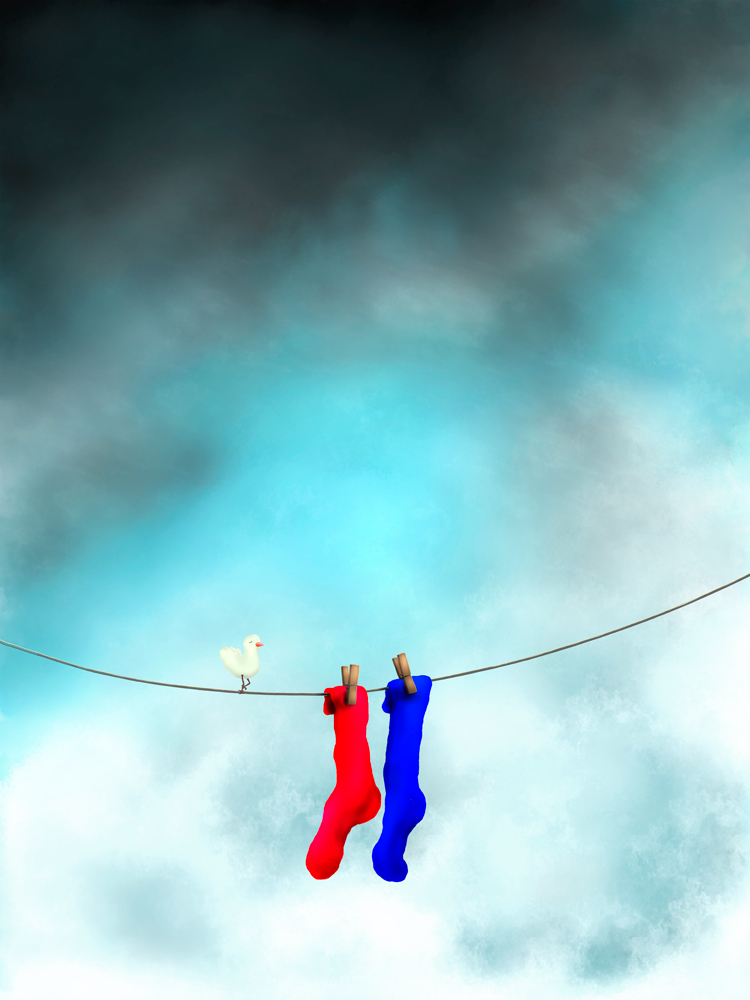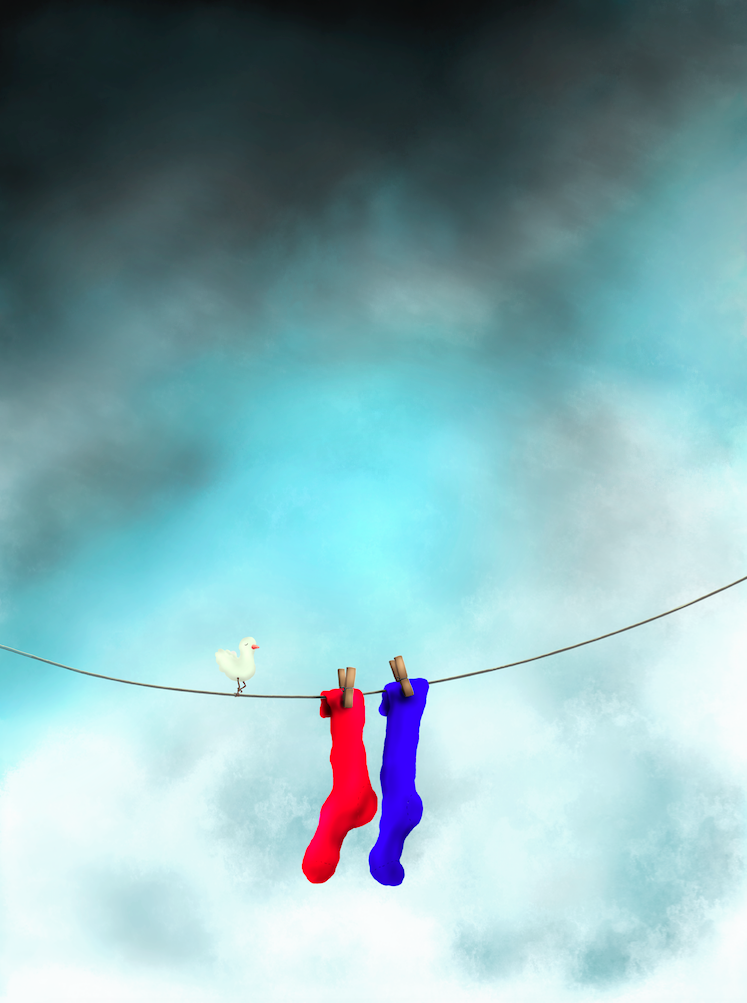[ad_1]

Urs Fischer, 2 Socks, 2018, aluminum composite panel, aluminum honeycomb, two-component adhesive, primer, gesso, and solvent-based screen printing ink.
©URS FISCHER/COURTESY GAGOSIAN
For his fifth show with Gagosian in the past year, the Swiss artist Urs Fischer has taken over the gallery’s Beverly Hills outpost for a show called “Images,” which opens January 11 and runs through February 9. Fischer is best known for inventive sculpture, and that is here in the form of a motorized snail slithering through the space and a volcano that emits smoke, among other things, but the walls are also lined with new two-dimensional works. These richly colored figurative pieces—some depicting paintings on walls with light streaming into the picture in unusual ways, others offering glimpses of landscapes—were all made by the mostly New York–based artist on his iPad. The day before the opening of the show, ARTnews spoke with him about these new pieces, carrots, Michel Marjerus, his relationship with Gagosian, scale, and more. This conversation has been edited and condensed.
ARTnews: Tell me about your new show.
Urs Fischer: It’s all made-up imagery, that’s why it’s called “Images.” There are some sculptures, all smaller, drawings, paintings. They’re all made-up imagery, they’re not from somewhere.
So they just came to you, like in a dream?
Yeah! Exactly. I just make it, rather than working in specific theories or in some style. I just try to make them. Same with the sculptures.
A lot of them remind me of David Hockney’s iPad paintings. Had you been looking at those?
I saw those. Yeah, they come more from painting in a way. The thing in his case, the iPad drawings just get printed on an inkjet printer. If you see [my paintings] in real life, they glow more like a screen. The idea is to retain the light, and the light that falls into the room. It didn’t come from photography, but photography is light.
So to you, the Hockney ones are a lot more like paintings, and yours are more like photographs.
Yeah, he’s an awesome painter, and you can see him say, “Here, this is my ashtray, there’s the door, this is my view.” And the color is very much like, the history of painting is in there. Mine are coming more from drawing and PhotoShop. I’m not a painter, never was. But I like color a lot.
Who or what’s been inspiring you super recently?
I’ve been looking at a lot of Japanese stuff, like older stuff from the 17th century, that kind of thing was really interesting to me last year. I like that a lot. I haven’t really been looking at much art, recently.
Really? Why’s that?
Well, I like art. But there are so many other things in the world, you know. [laughs]
That’s true. You’re a big food guy, right?
I like food. . . . I like architecture a lot.
Alright, so what’s either your favorite thing you’ve eaten recently or favorite building you’ve seen?
My favorite thing I have eaten is probably a really good vegetable. A good ingredient is sometimes most memorable. I bought some carrots and they were so good. . . . I don’t even know. They just had so much flavor and they were so fresh. I liked the texture and how they looked, it was just like they were really happy carrots, you know?
When a lot of people think of your work, they probably think of large-scale sculptures, but the pieces in this show are really small. What’s your relationship with scale been like recently?
I also do very little sculptures. It just depends, because if you put a little sculpture outside it doesn’t work. The size of an artwork is in your memory, ultimately. A tiny thing, like a furry cup [a reference to Méret Oppenheim’s 1936 Le Déjeuner en fourrure] can be monumental in its impact. A bigger Richard Serra might feel smaller than a furry cup. Ultimately it’s irrelevant what size artworks have, it’s what size they take on in your memory.
Was there anything out of the ordinary about making these works? You only had a year, right?
Yeah, I just like making artwork, you know. In my point of view, you can just do what you want, and it’s your associations and how they tie in to your memory and your life and your subconscious over the years in your being: that’s where an artwork unfolds. That’s its true power. It adds to my experience of life. Some artworks I encounter make me understand things in a non-linear way, and I think that’s where the true power is to me, rather than in rational or political worlds. It can function in those worlds, but an artwork is not about the now. What the artwork communicates now, it will communicate differently in ten years.
So do you feel differently about your earlier work now?
Oh totally. My own, but also other people’s work. The art I saw when I was like, 20, and then I see it now, and some of it ages really great and some of it disappears and comes back. For example I was looking at Michel Majerus. Michel’s work, I only met him briefly about three months before he passed, but at the time it looked a lot to me like the computer graphics from the ‘90s. It has this kind of post-Kippenberger, post-Polke, Rosenquist computer kind of mashup. But it ages formally really well now. It’s very strong. Some things have something else to say through time, in a way. And you don’t know what that is, and that’s what art is awesome for.
So this is your fifth show with Gagosian over the past year. What’s your relationship like with the gallery and with Larry?
Yeah, we get along. We don’t like hang out and I don’t like call him every day. I just like the ease of it, to tell you frankly. They’re organized and I like to get stuff done. It’s not complicated. They trust me, I don’t have to say what I do. I just say, “I need the space, can I have it?” And we’re done. I like to move fast and I have a lot of different interests.
Last question. You said that sculptures and artwork will exist as memories for the people who see them. For the people who go see this show, what do you hope that memory looks like?
Maybe just a little memory of a little appreciation of what’s around us. Little things. Just a little bit of light. Just a moment. Little.
[ad_2]
Source link

